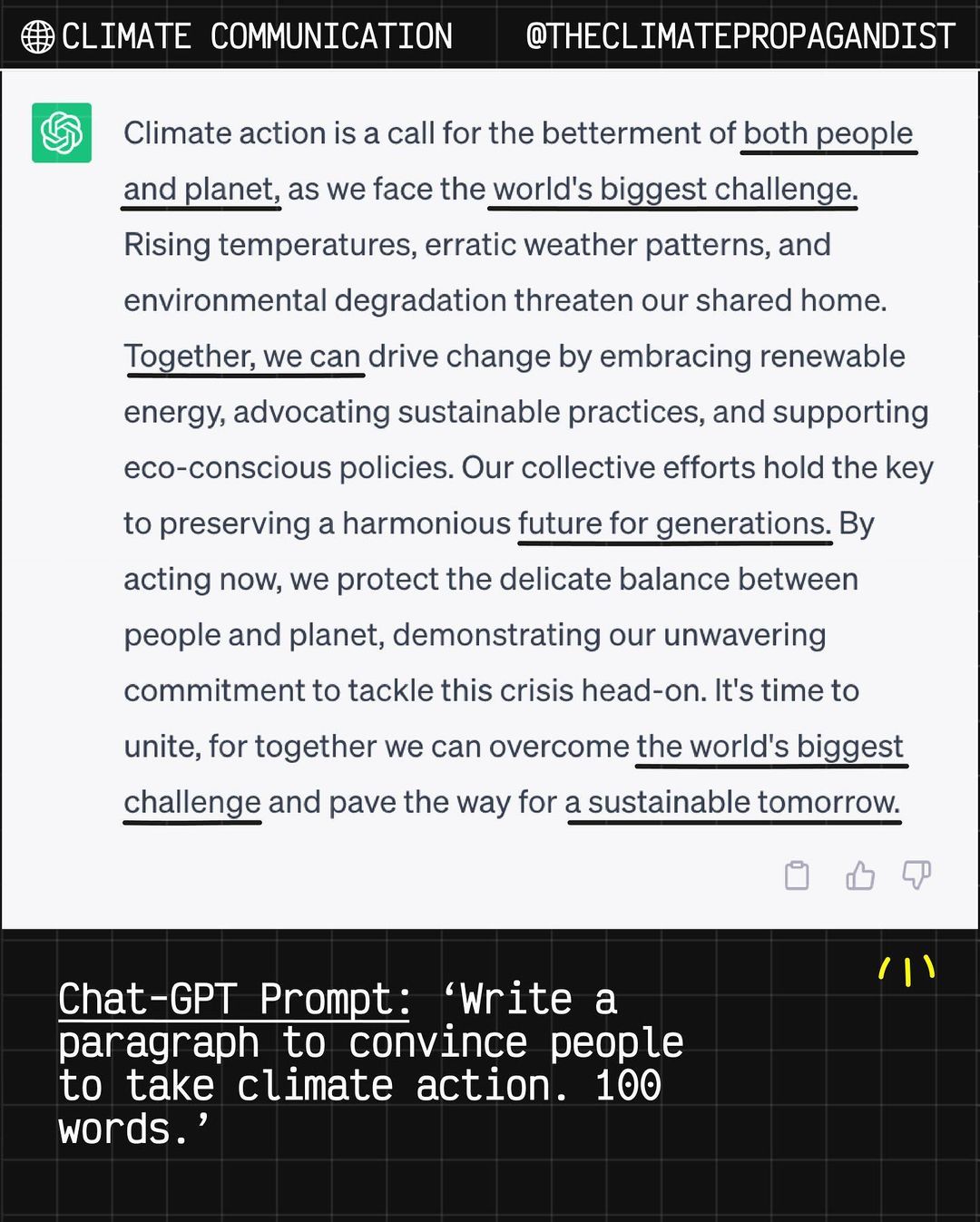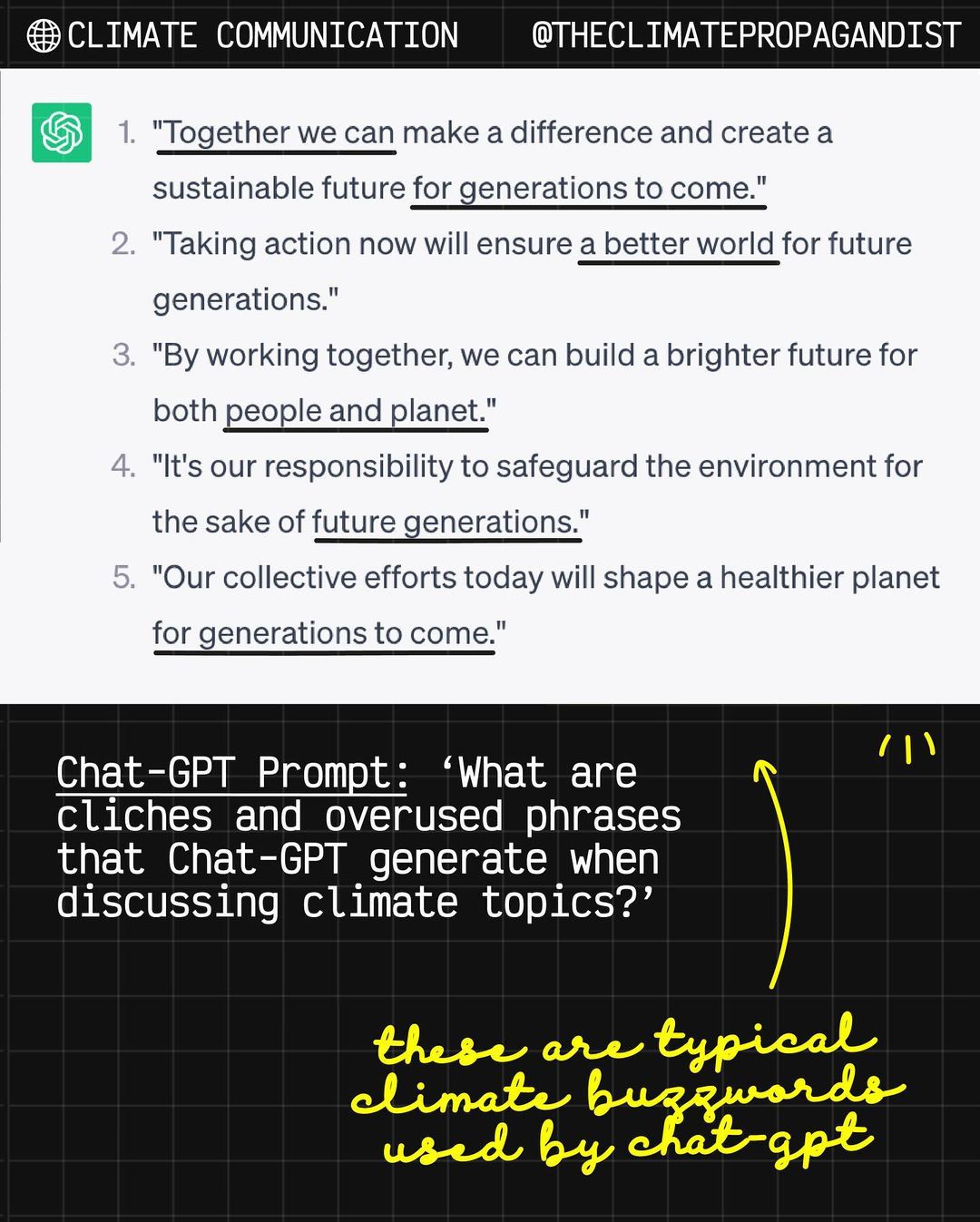
ChatGPT is killing your climate comms
The contents of this article were originally brought forward by The Climage Propagandist and can be found here.
Anyone who’s ever given a sustainability-related prompt to Chat-GPT, knows: the writing does not engage people! Read on to find out why using this tool could make you sound like a Chat-GPT bot at best and a serial greenwasher at worst.
Chat-GPT language is dull by design
Let’s examine a different aspect of Chat-GPT’s impact on climate – not its significant carbon footprint, but the way it affects our climate communications.
Chat-GPT operates through predictive text algorithms, resulting in writing that is often fluffy, boring, and monotonous. By searching for predictable word combinations, Chat-GPT makes all writing sound the same (which isn’t exactly a recipe for captivating the masses).
An example of Chat-GPT language
Chat-GPT generates stock sustainability
Chat-GPT has in fact intensified a phenomenon known as ‘Stock Sustainability’ – a mix of jargon, corporate ‘business speak’, and strings of unconvincing, generic phrases like “we care”, “for the future”, and “together for change”.
Chat-GPT functions much like a linguistic vending machine that dispenses well-meaning but ultimately empty rhetoric.
An example of stock sustainability
Chat-GPT lacks emotional connection
Individually, each of these words or phrases may work. However, when used repeatedly and strung together, they form a vapid and vague language.
Effective climate communication requires writing that is authentic, personal, and specific. Stock sustainability language does not engage people – it lacks a human touch! In the best case, you sound like a Chat-GPT bot, and in the worst case, you sound like a serial greenwasher.
For a broad and general overview of effective climate communication, check out Words that Work: Effective language in Sustainability communications.








